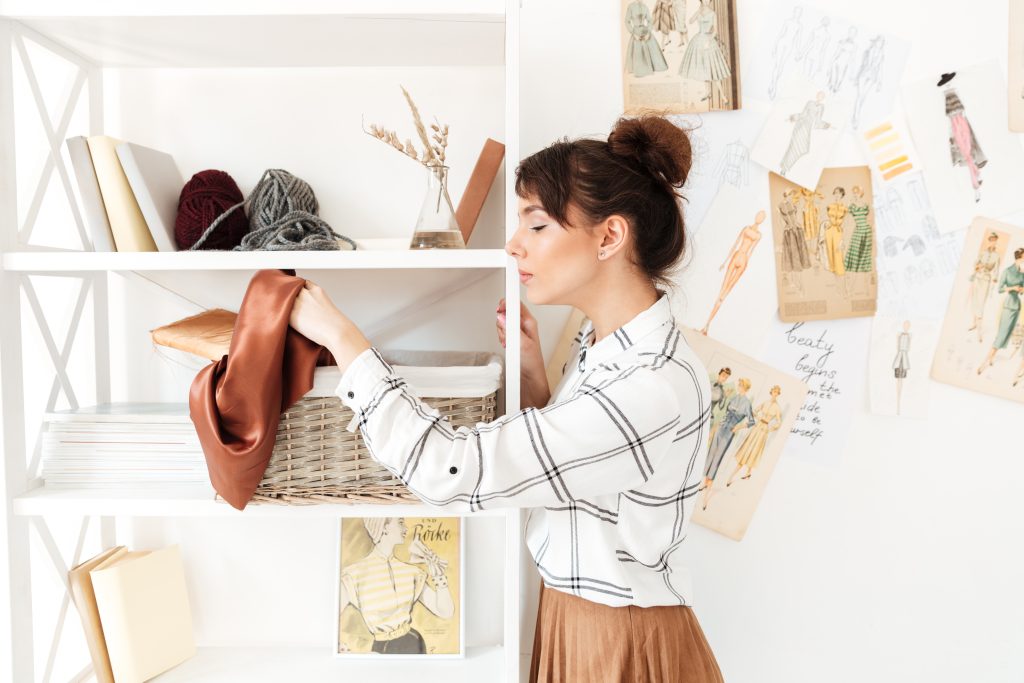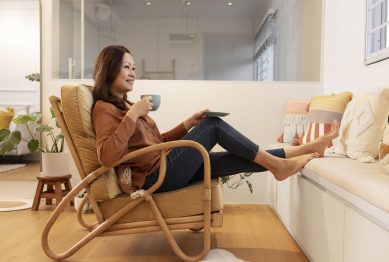In today’s fast-paced world, home organization plays a vital role in creating a space that promotes productivity, comfort, and well-being. With work-from-home culture, online schooling, and everyday family life, managing household clutter and ensuring that every area serves a purpose can be a challenge. However, creating a well-organized home doesn’t have to be overwhelming. In fact, the right organizational strategies can help simplify daily life, reduce stress, and increase efficiency.
This article will explore emerging trends in home organization, offering practical tips and innovative solutions for decluttering and optimizing your space. Whether you live in a large home or a small apartment, these strategies will help you make the most of your environment and create a home that fosters better productivity and mental clarity.

Why Home Organization is More Important Than Ever
The need for an organized home is more pressing than ever. Today, people are spending more time at home due to changes in work dynamics and lifestyles. Research from The National Association of Professional Organizers (NAPO) shows that clutter can contribute to stress, reduce productivity, and even negatively impact your mental health. A cluttered space can make it harder to focus, increase feelings of anxiety, and even cause physical discomfort.
The good news is that the trend towards home organization has led to a surge in creative solutions that cater to different needs. From minimalist designs to multifunctional furniture, the focus is now on maximizing space and creating harmony at home. Let’s dive into some of the current trends and tips that can make your home more organized and functional.
Key Trends in Home Organization
1. Minimalism: Simplifying for a More Peaceful Home
Minimalism continues to be one of the most popular trends in home organization. The concept is simple: remove the excess and focus on the essentials. The minimalistic approach is not just about decluttering—it’s about fostering a sense of peace and clarity by limiting distractions in your space.
Here’s how to incorporate minimalism into your home:
- Declutter Frequently: Make it a habit to regularly assess what you need and remove items that no longer serve a purpose. This can be done seasonally or monthly.
- Embrace Neutral Colors: A neutral color palette promotes tranquility and makes your home feel more open and inviting.
- Invest in Multi-Functional Furniture: Choose furniture that serves multiple purposes, such as a storage bench or a fold-out desk. This reduces the need for extra pieces and keeps the space functional and neat.
By adopting a minimalist approach, you create a calm environment that reduces mental clutter and enhances focus.
2. Smart Storage Solutions: Maximize Every Inch of Space
As homes get smaller and families grow, the need for smart storage solutions is on the rise. Innovative products and designs allow us to store items in creative ways, maximizing the use of every inch of space. Whether you’re dealing with limited closet space or need to find a home for miscellaneous items, there are plenty of solutions to keep things organized.
Consider these ideas for effective storage:
- Vertical Storage: Shelves and wall-mounted units allow you to store items without using valuable floor space. Floating shelves or pegboards in the kitchen, hallway, or home office can hold everything from books to tools.
- Under-Bed Storage: Use the space under your bed for storage bins or drawers. This often-overlooked space can be perfect for seasonal items or less frequently used belongings.
- Drawer Dividers: For kitchens, bathrooms, and offices, drawer dividers help keep small items like utensils, stationery, and makeup organized and easy to find.
- Over-the-Door Organizers: Use the back of doors for hanging storage. Over-the-door racks or hooks are great for storing shoes, bags, or even pantry items.
These simple strategies help you keep clutter at bay while using your home’s storage potential to the fullest.
3. Multifunctional Furniture for Flexible Spaces
As living spaces shrink, the demand for multifunctional furniture has skyrocketed. These clever pieces of furniture serve multiple purposes, allowing you to make the most of each room.
Some popular multifunctional furniture options include:
- Foldable Desks: Ideal for home offices, foldable desks can be tucked away when not in use, leaving more room for family activities.
- Sofa Beds: Sofa beds are perfect for guest rooms or apartments. They offer both seating and sleeping arrangements, saving space while still serving a practical purpose.
- Storage Ottomans: Ottomans that double as storage units help reduce clutter while offering a comfortable seating option or extra surface space.
- Expandable Dining Tables: An expandable dining table can be adjusted to fit your needs, whether it’s for a quiet dinner or a larger family gathering.
By incorporating multifunctional furniture into your home, you can easily adjust your space for different needs without overcrowding.
Practical Home Organization Tips for Busy Families
1. Create Zones for Different Activities
When you have a family, it’s essential to designate specific zones for various activities. This helps to keep everyone organized and ensures that each area of the house serves a distinct purpose. For example:
- Home Office Zone: Set up a designated work area, even if it’s just a small corner. Ensure it has all the essentials—desk, chair, storage, and good lighting—so that work doesn’t spill into other areas of the home.
- Study Area for Kids: Create a quiet, distraction-free zone for kids to study or do homework. Equip it with school supplies and organize it to minimize clutter.
- Living Room for Relaxation: Keep the living room as a space for relaxation and socialization. Consider using storage solutions like coffee tables with drawers to store remote controls, books, and other essentials.
By establishing distinct zones, you can easily maintain a sense of order in each area, ensuring that everyone has a designated space for their activities.
2. Use Labels to Organize Everything
Labels are an incredibly effective tool for maintaining organization in the home. When you label storage bins, boxes, and shelves, it’s easier for everyone in the household to find what they need and return items to their proper place.
- Labeled Storage Bins: Label bins in the closet or pantry to keep everything organized by category—like “Winter Clothes,” “Toys,” or “Snacks.”
- File Organization: Use labeled folders for important documents, bills, and personal papers. A filing cabinet or file boxes can make it easier to retrieve important documents when needed.
- Labeling for Kids: If you have young children, labeling bins or drawers with pictures or words helps them know where things belong, making it easier for them to clean up after themselves.
A well-labeled home reduces confusion and ensures that everything has its rightful place.
3. Regularly Purge and Organize
Organizing your home isn’t a one-time job. Regularly purging unnecessary items and re-organizing areas ensures that your home stays tidy and functional. Here are some ways to stay on top of organization:
- Seasonal Purge: Go through closets, the attic, or the garage once a season to remove things that are no longer needed. Donate clothes, toys, and household items that no longer serve a purpose.
- Quick Daily Cleanup: Set aside a few minutes each day to tidy up common areas. Have the whole family pitch in to make it a quick and easy task.
- Annual Reorganization: Every year, re-evaluate your home’s layout and organization to ensure that it still meets your needs. Reorganize closets, storage areas, and furniture as necessary.
By maintaining a regular cleaning and organizing routine, you can avoid clutter buildup and keep your home functioning efficiently.
Conclusion
Home organization is about more than just tidying up—it’s about creating a living space that works for you and your family. By adopting some of the emerging trends in organization, such as minimalism, smart storage solutions, and multifunctional furniture, you can simplify daily life and make your home a more functional, efficient, and peaceful place. With a little planning and consistency, your home can become a well-organized sanctuary that supports your family’s needs, reduces stress, and helps you stay on top of life’s demands.
References
- 30 Small Dining Room Ideas to Maximize Your Space, https://www.bhg.com
- 7 Multi-Purpose Room Ideas That Blend Form and Function, https://www.marthastewart.com
- 3 Multi-Purpose Room Design Ideas to Build Your Own, https://www.autonomous.ai









